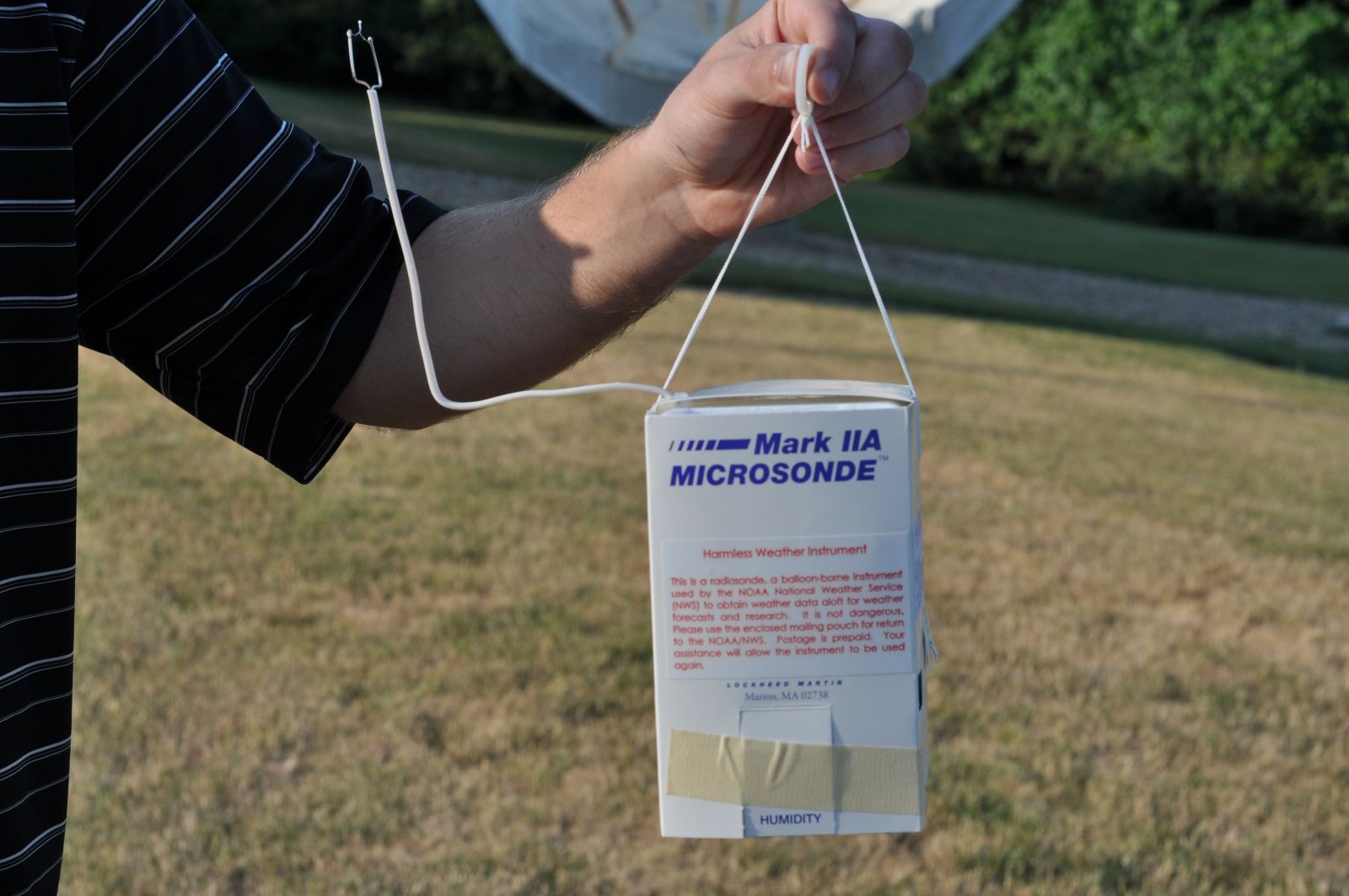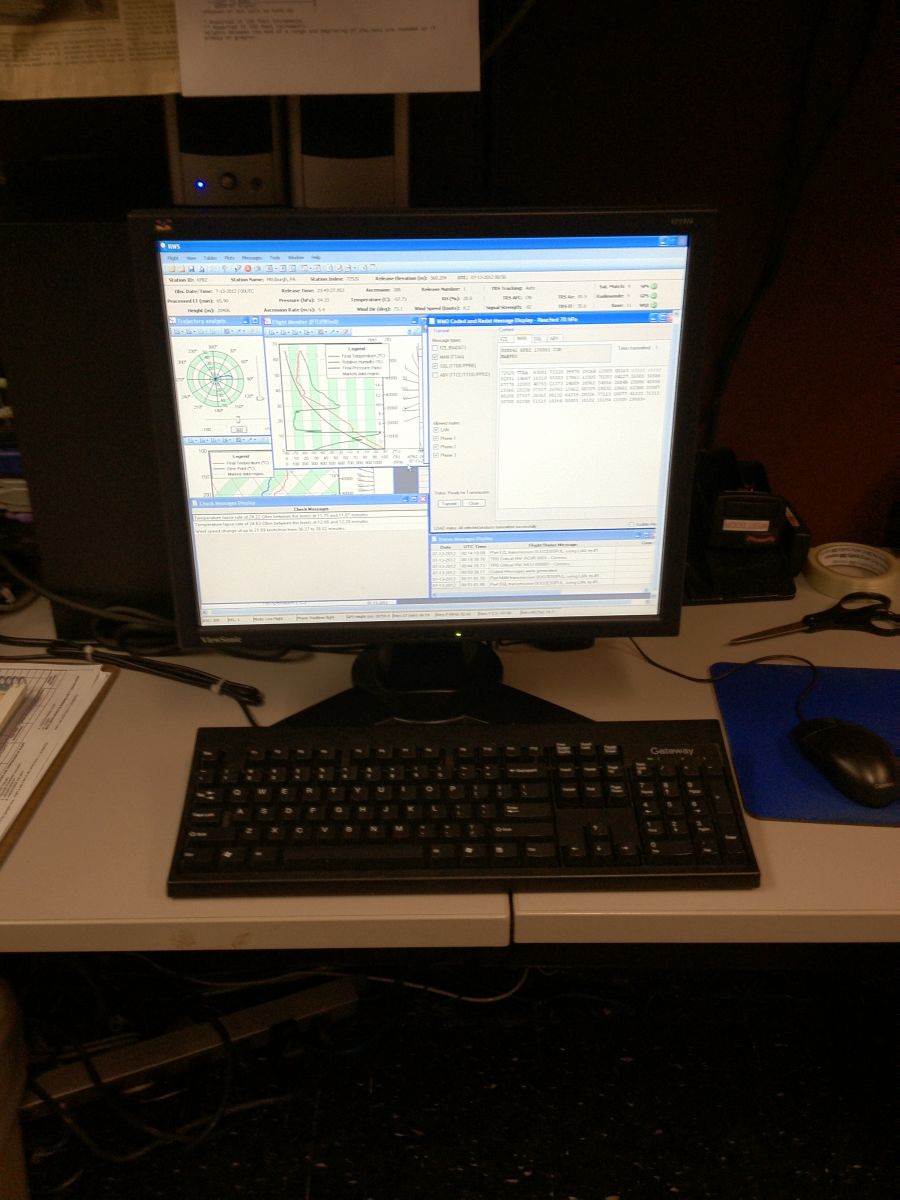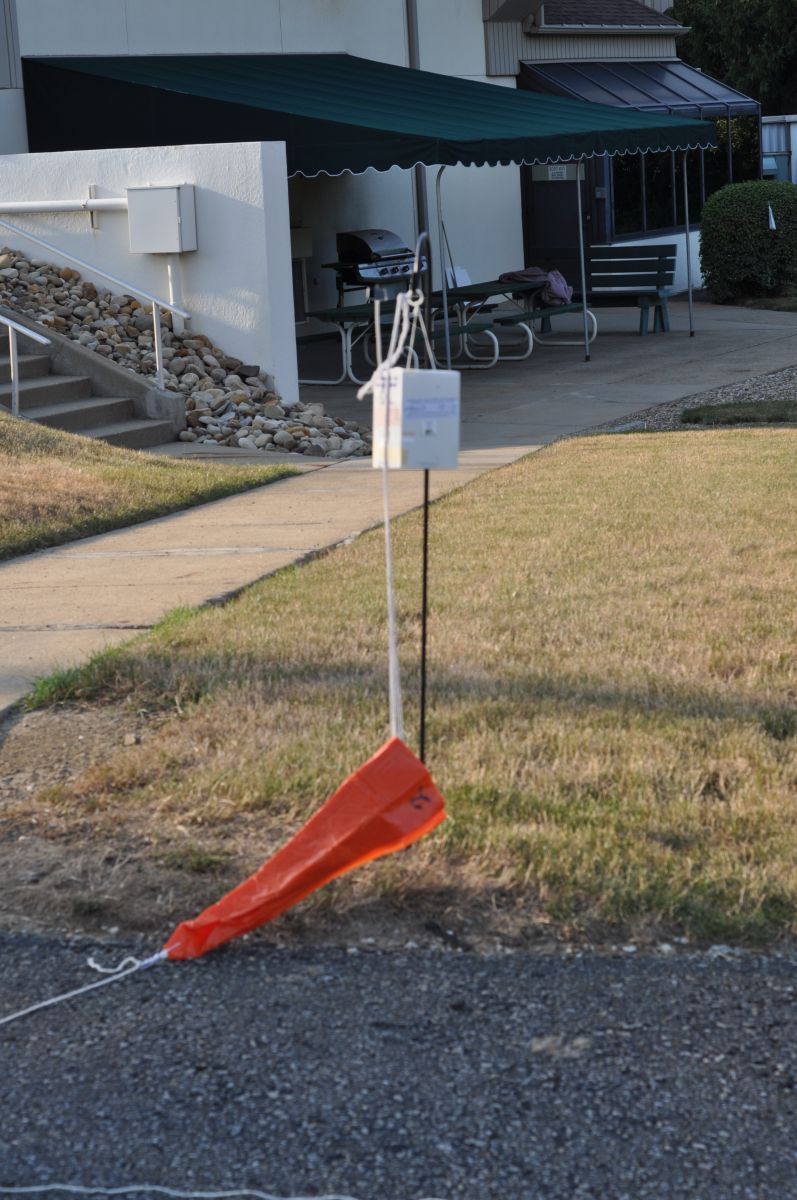|
UPPER AIR OBSERVATIONS
As mentioned in the forecaster section of this tour, much of the forecast is based on computer guidance. These computer models need to be initialized with current information before the software which processes atmospheric equations can be run to produce a forecast. Some of that information is garnered from surface observations. These observations come from thousands of sites across the country where a continuous weather watch of temperature, humidity, clouds, visibility (and any obstructions), winds, and atmospheric pressure data is maintained. Often, these sites can be found at airports as accurate, current weather information is necessary for aircraft to take off or land. Much of the time, this "weather watch" is maintained by a group of computerized instruments. However, this only handles what is occurring on the ground. Since weather is three-dimensional, we need data from all layers in the atmosphere. |
|
To accomplish this task, instrument packages attached to helium or hydrogen-filled balloons are launched at 70 sites in the continental United States, with an additional 22 sites in Alaska, Hawaii, and Pacific Territories, and others in Canada and Mexico. (For a map of launch sites, click here.) To synchronize the launches in North America and elsewhere around the world, the standard time zone for weather information worldwide is Greenwich Mean Time-- the time zone for Greenwich, England-- which is also know as Universal Coordinated Time, or UTC. Balloon flights occur at midnight and noon Greenwich time, or 00 UTC and 12 UTC. The actual launch takes place an hour earlier, so the data can be collected and transmitted by the observation time listed above. Locally, this translates to an observation time of 8 am/pm in the summer, and 7 am/pm in the winter, with launch time an hour earlier.
|
For a more complete history of upper air weather observations, click here

The instrument package that collects the data can be seen above. This instrument is know as a radiosonde (sonde for short)(silent e). The data which it collects includes pressure (from a pressure cell located inside the packaging), temperature (from relative electronic resistance; the wire upright), humidity, and winds (calculated from tracking the instrument, to be explained later). The sonde is powered by a water-activated chemical battery; a 9-volt would work initially, but isn't durable enough to last long enough or under harsh conditions. For more information about the radiosonde, click here. |
|
|
This instrument package is attached to a helium-filled balloon inside the inflation shelter, which is shown above. The balloon is approximately 5 feet tall and 4 feet in diameter at launch, and filled with approximately 65 cubic feet of helium. However, since air pressure decreases with height, the balloon is allowed to expand, to approximately 35 feet wide before it finally bursts, at a height of roughly 10 miles above Earth's surface. During its flight, the sonde is tracked by antenna via GPS under a dome at the launch site (seen below left), and the data is transmitted back to Pittsburgh via GPS. This signal is then carried by underground wire from the dome (a few hundred yards away) into our office. The launch is illustrated in the next three images below. The computer by which we monitor the flight can be seen below. |
|
 |
|
|
As mentioned previously, the winds aren't actually observed; rather, they are calculated based upon the change in positioning of the sonde over a time interval (every 6 seconds). Radiosondes that are tracked to provide wind data are called rawinsondes. Again, the computer is located inside our office and tracks the instrument as soon as the instrument is released. Once the balloon bursts, it is free to fall back to Earth. For this reason, a parachute is attached between the balloon and the sonde (See Picture Above), so it will float back to the ground, and no damage will be done to any personal property. The parachute is the orange object connected to the radiosonde (shown below). If found, most radiosondes can be returned (using a mailer inside) and reconditioned.
 |